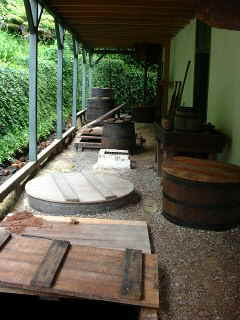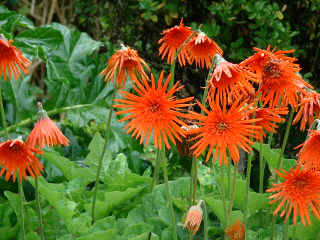When Bishop Pompallier arrived in New Zealand in 1938,
both the Anglican and Methodist missions in the area were already printing in the Maori
language (including scurrilous attacks on the Roman Catholic church). Initially the
Catholic mission made do with handwritten prayer books and poorly printed booklets, but in
1841 Jean Yvert, a lay missionary, arrived at Kororareka with an iron-framed, top of the
line, Gaveaux press. At last the missionaries could undertake extensive printing in Maori,
including the production of prayer books, pastoral letters and catechisms. Later on school
texts on mathematics and grammar were published. So successful were the various missionary
printeries in the Bay of Islands area, that local Maori were often more literate than the
local white population.
The Gaveaux press on display is the original press. When the printery was finally
dismantled and sold, this press was given to the Waikato Maori who used it to print a
newspaper between 1892 and 1933. The press is now on loan from the Maori Queen to the NZ
Historic Trust.
After all the sheets of a book or pamphlet had been printed, Jean Yvert, the Marist
printer and his assistants began the laborious task of gathering the printed sheets into
quires ready for folding and binding. There are several wooden vises and presses
exhibited that were used to block, square, compress, and hold the books while they were
sewn. |

|
| In 1843, the monks built a double storied
lean-to at the back of the house to house a tannery. This was not because they wanted to
make leather to cover books, but rather because their shoes had worn out and they needed
leather to make new ones! |
|

|
A local man, James Callaghan, oversaw the tannery and later on,
when the Marist Brothers left the Bay of Islands for Auckland, he moved in with his family
and continued to run the tannery.
At a later date, the back of the house was damaged by a landslide and the tannery
was only re-discovered 20 years ago, when the house was being restored. Following an
archeological restoration the tannery is fully functional again.The
tanning pits have been restored and contain the mild tannic acid in which the hides were
soaked for several weeks. Reproductions of the various tools line the walls and drying
hides hang from the ceiling. There are piles of wattles from which tannin is leached to
create the tannic acid solution. Originally the tannin for frontier New Zealand tanneries
came from local Towai and Tanekaha bark, but later tannin-rich wattle from Australia was
grown. (This wattle is now considered a noxious weed in New Zealand.)
In some ways it is a good thing that full time tanning does not take place here
anymore. Apparently the smell was awful as fat from the hides was rendered to make dubbin
and animal hooves were boiled to make glue. |
|
| In 1879 Hamlyn Greenway purchased the propery and cleared the
neighbouring buildings, converted the printery into a home, planted the hedges, flower
borders and an orchard. The mission chapel and hillside were used for livestock. In 1905
Mr. Henry Stephenson moved in and set out a lawn tennis and croquet court. On the hillside
he planted a parkland wilderness. Today the garden is all flowers, the tennis court is
still there, as well as the flagpole put up by Mr. Stephenson. The flower
garden is beautiful and well tended, with both New Zealand and introduced plants. |

|
|
|
 S/V
TETHYS
S/V
TETHYS


